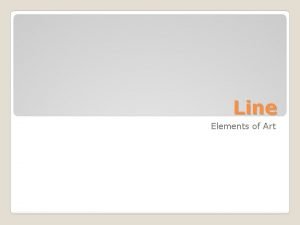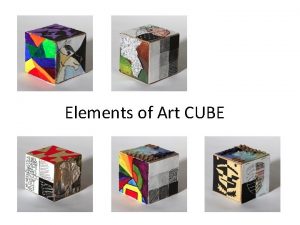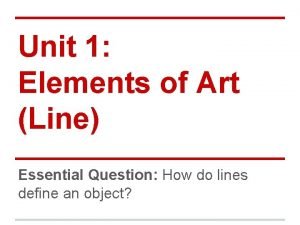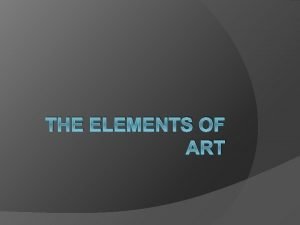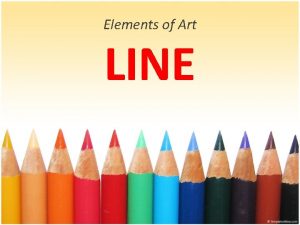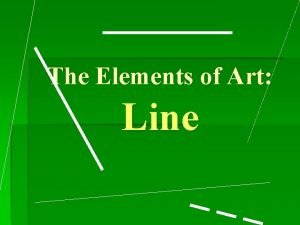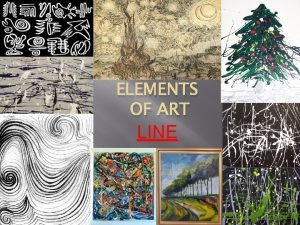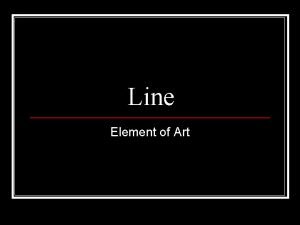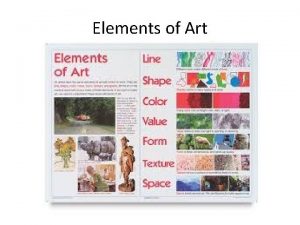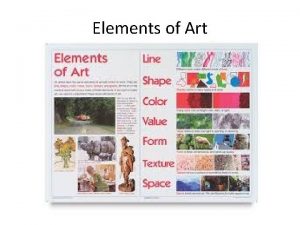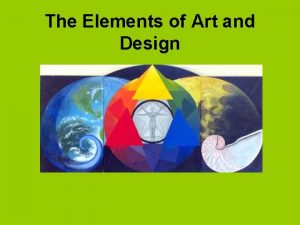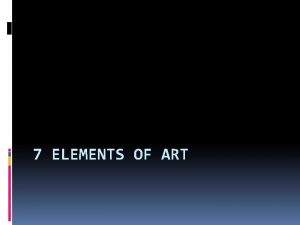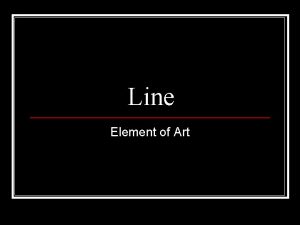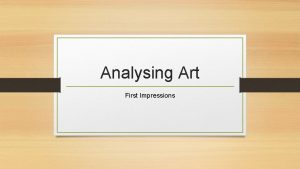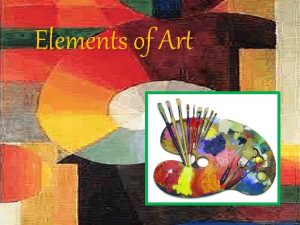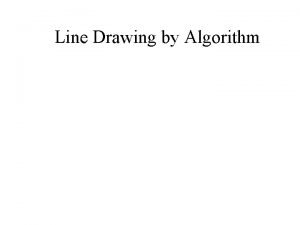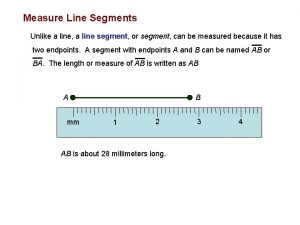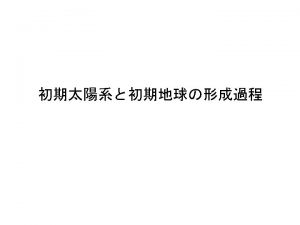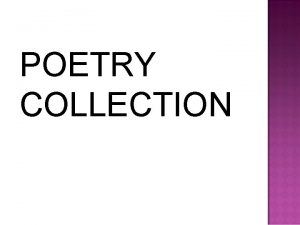Line Elements of Art The Elements of Art





















- Slides: 21

Line Elements of Art

�The Elements of Art are… ◦ The building blocks used by artists to create great works of art. ◦ There are six Elements of Art. What is an Element of Art?

�What Line is a line? (In Art Terms, Not Math!)

�Line is… ◦ A mark with greater length than width. �What is length? �What is width? ◦ An Element of Art. ◦ Never ending. Definition of Line

�Lines have many characteristics: ◦ Width ◦ Length ◦ Direction ◦ Focus ◦ Feeling Characteristics of Line

�What are some examples of line width? Line Width

�Width: Thick, thin, tapered, uneven Line Width

�What are some examples of line length? Line Length

�Length: Long, short, continuous, broken Line Length

�What are some examples of line direction? Line Direction

�Direction: Horizontal, vertical, diagonal, curved, perpendicular, parallel, radial Line Direction

�What are some examples of line focus? Line Focus

�Focus: Sharp, blurry Line Focus

�What are some examples of line feeling? Line Feeling

�Feeling: smooth Zigzag, jagged/sharp, graceful, Line Feeling

�In your art notebook, practice filling up the page with as many different lines as you can! Try it!

�Pattern is… ◦ The repeating of something all over the artwork. ◦ Patterns have repetition. �Repetition is when something repeats over and over to create unity Pattern

�Think of a design and practice repeating that design in your notebook! Try It!

�Op Art is a type of art from that ‘ 60 s that uses optical illusions to trick the eye into looking like the art is moving. ◦ An illusion is when your eyes are tricked into seeing something. Op Art

�Bridget Riley was a famous Op Art artist. �She worked primarily will lines to create movement. Bridget Riley

�M. C. Escher was another very famous Op Art artist. �He created crazy scenes that tricked the eye. M. C. Escher
 Representative fraction
Representative fraction Sharp, jagged, graceful, smooth
Sharp, jagged, graceful, smooth Elements of art line example
Elements of art line example Elements of art line
Elements of art line Art elements line
Art elements line Hát kết hợp bộ gõ cơ thể
Hát kết hợp bộ gõ cơ thể Slidetodoc
Slidetodoc Bổ thể
Bổ thể Tỉ lệ cơ thể trẻ em
Tỉ lệ cơ thể trẻ em Gấu đi như thế nào
Gấu đi như thế nào Tư thế worm breton là gì
Tư thế worm breton là gì Bài hát chúa yêu trần thế alleluia
Bài hát chúa yêu trần thế alleluia Các môn thể thao bắt đầu bằng tiếng đua
Các môn thể thao bắt đầu bằng tiếng đua Thế nào là hệ số cao nhất
Thế nào là hệ số cao nhất Các châu lục và đại dương trên thế giới
Các châu lục và đại dương trên thế giới Công của trọng lực
Công của trọng lực Trời xanh đây là của chúng ta thể thơ
Trời xanh đây là của chúng ta thể thơ Cách giải mật thư tọa độ
Cách giải mật thư tọa độ Phép trừ bù
Phép trừ bù độ dài liên kết
độ dài liên kết Các châu lục và đại dương trên thế giới
Các châu lục và đại dương trên thế giới Thể thơ truyền thống
Thể thơ truyền thống

